Social Dance Positions and Steps
This is an excerpt from Beginning Musical Theatre Dance With HKPropel Access by Diana Dart Harris.
This genre of dance has its roots in early courtship dances. Social dances are partner dances; they reflect our need to be socially connected to others. Ballroom dance is one form of social dance, as are contemporary partner dances like the tango and the Lindy. When used in choreography, the steps will be true to form, but social dances may be altered some because they are used in a performance setting and need to keep the audience involved.
Basic Partner Positions
Six basic partner positions are used in social dances. These basic dance positions determine how you relate to your partner during the dance. The man stands on the left side, and the woman is always on the right side in all these positions.
- Shine position - In this position, the partners face each other without touching (figure 5.26).
- Two-hands joined position - Partners stand facing each other. Both the man and the woman hold their elbows by their sides with their forearms extended (figure 5.27). They can both have their palms facing down, and the man can place his thumb in the woman's palm and wrap his fingers around the top of her hands, or the man can have his palms facing up and place his thumb on top of the woman's fingers and his fingers in her palm.
- One-hand joined position - This position is the same as the two-hands joined position except that each partner uses only one hand (figure 5.28).
- Closed position - The partners face each other in this position. The man's left hand holds the woman's right hand. Palms are touching, and fingers and thumbs are loosely clasped around each other's hands. The man's right hand rests on the woman's back, cradling her left shoulder blade. The woman's left arm rests on top of the man's right arm, and her left hand rests gently on his right shoulder (figure 5.29).
- Semiopen position - In this position, the partners stand beside each other with their bodies turned at a 45-degree angle to each other. The man places his right hand below the woman's left shoulder blade with his elbow slightly bent. The woman's left arm rests gently on the man's right arm, and her left hand is in front of his right shoulder. Both partners extend their outside arms and hold hands (figure 5.30).
- Inside-hands joined position - The partners stand side by side. The man extends his right arm and offers his right hand to his partner, and the woman places her left palm in the man's right hand. Both place their outside hands on their hips (figure 5.31).
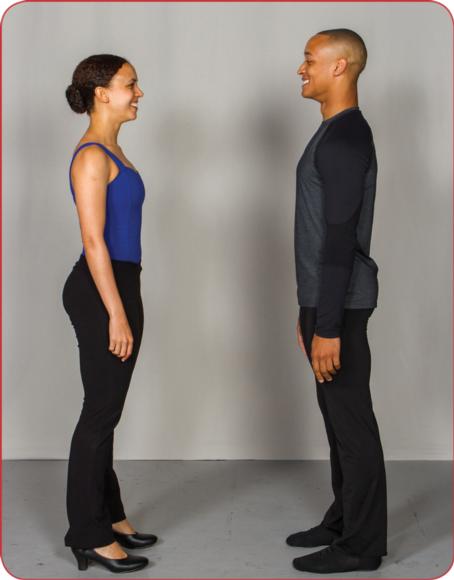
Shine position.
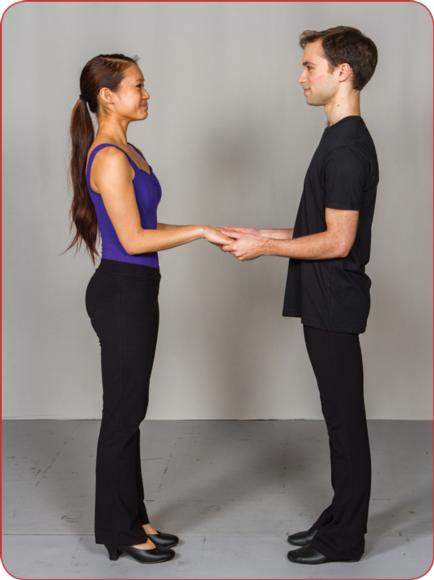
Two-hands joined position.
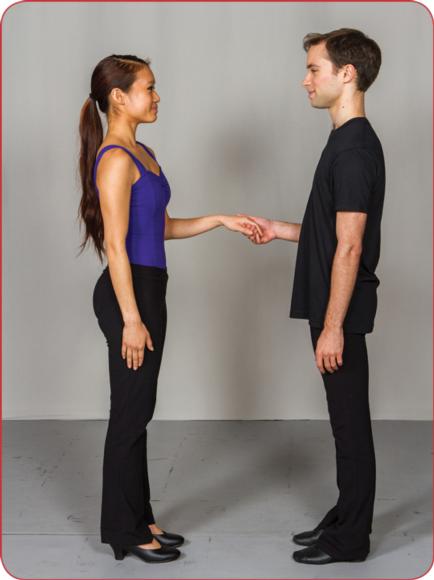
One-hand joined position.
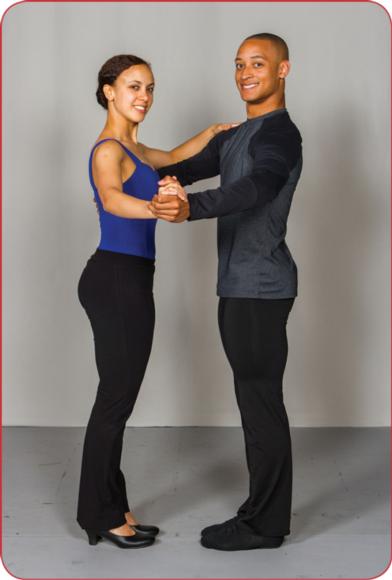
Closed position.
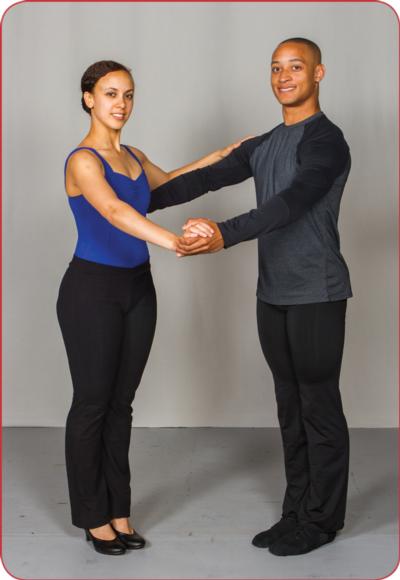
Semiopen position.
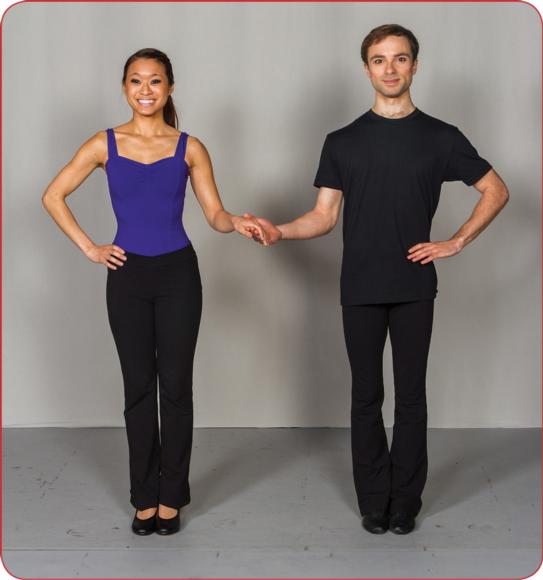
Inside-hands joined position.
Basic Steps
In social dance, basic movements are connected in recurring patterns to create the dances. Because social dances are partner dances, someone always leads the movement, typically the male, and someone follows, typically the female. The lead usually begins the steps on the left foot, and the person who is following uses the right foot to begin the patterns. Here are some of the common steps you will need to know.
- Step hop - For a step hop you step from one foot onto the other, shifting your weight, and then hop on that foot.
- Triple step - In this step you take three steps in two counts. You step on the right foot, then step on the ball of the left foot, and conclude with another step on the right foot. This step is counted "1 and 2." A series of triple steps are often done together and in various directions.
- Rock step - In this step you transfer weight from one foot to the other with a rocking motion. You step backward on one foot with a full transfer of weight and complete it by stepping forward on the other foot while again transferring your weight. The rock step can also be done by rocking and stepping forward with the first foot and then stepping back onto the second foot. Each step receives a full count.
- Box step - This six-count step makes a box, or square, pattern on the floor. The lead starts with the left foot stepping forward. A step to the side with the right foot follows, and then the left foot steps in to meet the right foot. The right foot then steps back, the left foot steps side, and the right foot steps in to meet the left. The person following begins with the right foot stepping backward and reverses the pattern.
Learn more about Beginning Musical Theatre Dance.
More Excerpts From Beginning Musical Theatre Dance With HKPropel AccessSHOP

Get the latest insights with regular newsletters, plus periodic product information and special insider offers.
JOIN NOW


